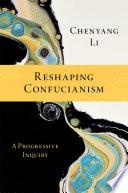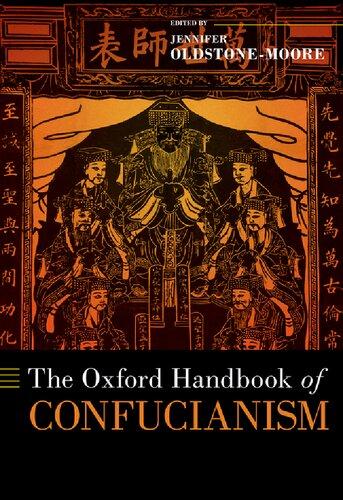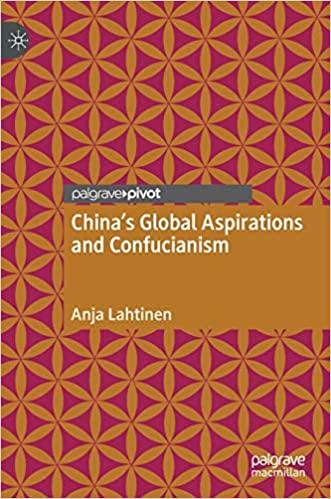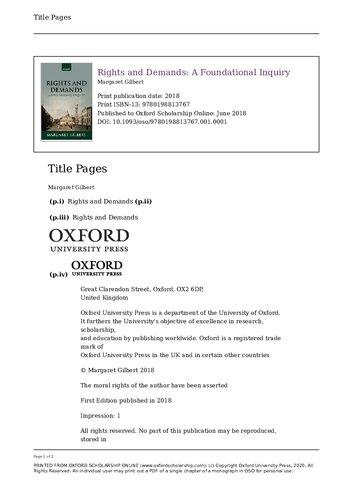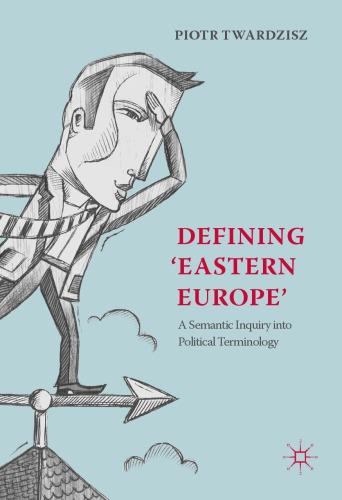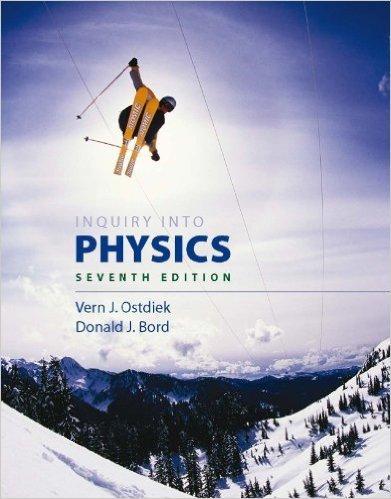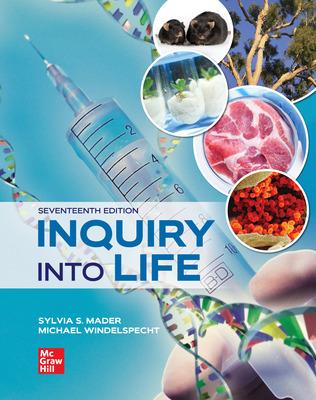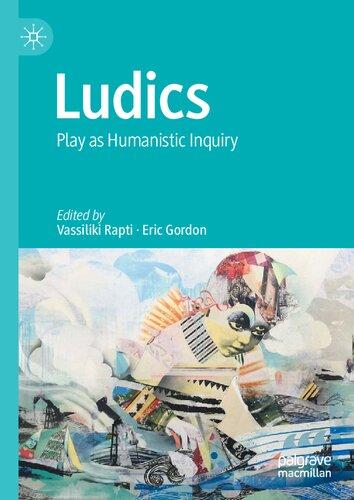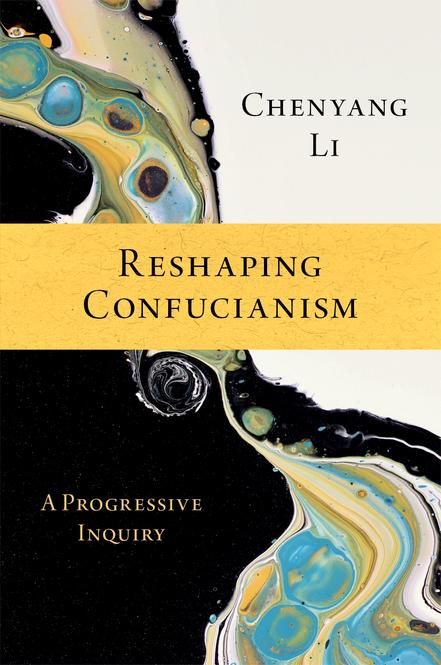Introduction
Progressive Confucianism
This book aims to accomplish two goals, both that of a research monograph and that of a general introduction to progressive Confucianism. Books on Confucianism usually fall into two categories. One consists of monographs and anthologies on a specific topic, which often exhibit scholarly sophistication and contemporary relevance, yet they do not present an extensive account of Confucian philosophy. The other includes textbooks of a general introduction to Confucianism, which tend to provide informative overviews of its teachings in history but lack in-depth philosophical inquiry and reflection on their contemporary significance. Reshaping Confucianism brings together an original research monograph and an introductory textbook into one volume, showcasing both the depth and breadth of recent insight into the Confucian legacy as well as how it continues to influence the presentday world.
Confucianism is a living and evolving tradition. Its teachings have been continuously defined and redefined in response to the changing political and social context of China’s history. Extending this effort in reconstructing Confucianism, I critically analyze and progressively develop a series of core ideas that originated from Confucian classic texts and do so in the context of contemporary scholarly discourse. In addition, I combine an in-depth analysis of historical teachings with a systematic deliberation on their contemporary significance, paying attention to the current state of the field of research. Furthermore, a comparative perspective is adopted so that Confucian philosophy is placed in the context of world philosophy. Each chapter presents something new: a novel interpretation from a fresh angle, an insight that has been neglected in scholarship, or a reformed idea that connects tradition with modern sensibilities. Readers will see not only how various seminal ideas were conceived and developed by ancient thinkers, but also how these ideas can be reconstructed and aligned in a sensible Confucian philosophy in response to contemporary challenges. As such, each chapter can be read as
Reshaping Confucianism. Chenyang Li, Oxford University Press. © Oxford University Press 2024. DOI: 10.1093/oso/9780197657621.003.0001
A
an independent research article, with issues raised to be further explored and debated. Collectively, the chapters present most—albeit not exhaustively— key ideas of Confucian philosophy and hence can serve as an introduction to Confucian philosophy. Study questions are provided toward the end of each chapter to assist students in the classroom to comprehend key points and to develop their own views.
Main topics covered in this book are dynamic harmony (he 和), carecentered virtue (ren 仁), ritual propriety (li 禮), filial care (xiao 孝), differentiated gender equilibrium (bie 别), friendship (you 友), longevity (shou 壽), sagehood (sheng 聖), equality (qi 齊), freedom (ziyou 自由), politics (zheng 政), and education (jiao 教). Some of these are found on the usual list of introductory Confucian philosophy books. Others are newcomers to be (re)formulated for progressive Confucianism, as will be explained shortly. This book raises fundamental questions about Confucian philosophy. How central is he as a Confucian value? Is ren care-centered? Is it appropriate to interpret li as cultural grammar? Is Xunzi’s philosophy of filial care more progressive than Kongzi’s and hence more suitable for contemporary society? What is the best form of Confucian gender equality today? Can sages— including Kongzi—be wrong? Should and how can freedom become a part of progressive Confucianism? Is the model of “politics without (depending on) political leaders” a viable way of realizing the Confucian political ideal of the good society? These questions are addressed with a set of specific solutions. The views are provocative and even controversial; they are expected to spark further debates on these important issues.
This introduction contextualizes these inquiries by explaining my research goals, orientation, approaches, methodologies, and the outline of the chapters.
1. Progressive Confucianism
“Confucianism” is the Latinized name originally coined by Western missionaries for rujia 儒家, namely the School of Ru (“Scholar”). It refers to the intellectual and cultural tradition that includes not only “Confucius” (Kongzi 孔子, 551–479 BCE) but also other classical thinkers and texts associated with the tradition.1 As a philosophy, Confucianism first flourished during the “Spring–Autumn and Warring States” period (ca. 770 221 BCE), when such major thinkers as Kongzi (“Master Kong”), Mengzi (Mencius
孟子, 372–289 BCE) and Xunzi (荀子, third century BCE) gained social prominence. Most of Confucian classic texts during this period or slightly thereafter are without definitive authors, including the Book of Changes (Yijing 易經), the Book of Rites (Liji 禮記), the Book of History (Shangshu 尚書), the Rites of Zhou (Zhouli 周禮), and the Book of Poetry (Shijing 詩 經). Understood this way, classical Confucianism is “greater pre-Qin Confucianism” (大先秦儒學), as opposed to a narrowly conceived pre-Qin Confucianism that is confined to Kongzi and Mengzi. Subsequent revivals of Confucian philosophy include Neo-Confucianism in the Song and Ming dynasties (ca. 960–1644), when various thinkers re-worked classic ideas under the influence of Buddhism and Daoism, and again its modern renaissance under the label of “New Confucianism” (xin rujia 新儒家), which began after the first quarter of the twentieth century and has continued to the present day. In each subsequent period, Confucian thinkers attempted to reconstruct Confucian philosophy by reclaiming ancient ideas and reformulating them with new insights to address perennial human concerns in the context of their respective times. Continuing such a tradition, this book is a study of key ideas of Confucian philosophy with an aim to interpret and formulate them progressively in contemporary perspectives.2
This study takes Confucianism as an evolving body of rich cultural resources that provides not only valuable knowledge about a long and distant past but also fundamental insights into the human condition. Admittedly, some of its ideas as conceived by ancient thinkers may no longer be relevant for our times, whereas others remain pertinent, even critically important, to contemporary society. There is no denying, for instance, that ancient Confucian thinkers held sexist views typical of their times. These views are no longer tenable in the modern context. Similarly, ancient Confucian thinkers did not advocate such ideas as democracy, human rights, and political equality, even though some of their humanist views can be extended in these directions today. To make its existence meaningful, Confucian philosophy today must be progressive. Progressive efforts in Confucianism must integrate two components. On the one hand, as far as it is Confucian, progressive Confucianism must maintain its Confucian characteristics. This requires it to preserve an organic connection with its ancient sources and to take into consideration what ancient Confucian thinkers have said about various issues. On the other hand, progressive Confucianism today must advance itself with sensibilities developed through modern-day life experiences, keeping itself answerable to various contemporary challenges.
The latter requires a critical attitude toward classic texts, to discriminate between what is alive and what is dead in ancient teachings. Together, these two components create an ongoing tension within the continuation of the Confucian tradition. Handling such tension calls for careful analysis, critical reasoning, rigorous argument, and delicate balancing. Moreover, to advance itself in the multicultural context of the globalized world, progressive Confucianism needs to use resources and heed challenges not only from within its own tradition but also from external sources. The last point makes today’s development of Confucianism inevitably cross-cultural and comparative in character.
To my knowledge, the term “progressive Confucianism” was first coined by Stephen Angle in his book Contemporary Confucian Political Philosophy: Toward Progressive Confucianism (2012). More recently, Angle further advocated this idea in Growing Moral: A Confucian Guide to Life (2022). Angle understands progressive Confucianism as “a Confucianism that, in its efforts to help us and our societies get better, self-critically recognizes that it, too, must respond to changing circumstances” (Angle 2022, 69). He further elaborates that:
The idea that ethical insight leads to progressive political change, which in turn leads to greater realization of our potential for virtue, lies at the heart of progressive Confucianism. (Angle 2022, 197)
Angle maintains, forcefully, that progressive Confucianism is solidly Confucian in that social institutions advocated by progressive Confucians are valued because of their capacity to assist in the realization of the fundamental human virtues that Confucians have always promoted since ancient times. This book shares Angle’s goal of constructing a progressive Confucian philosophy for contemporary times. I am in agreement with Angle on his view of the undisputable rootedness of progressive Confucianism. I also hold that social structures must be changed when they become barriers to the realization of virtue. Hence, progressive Confucianism must support social reform and political reform where reform is needed. Even though political philosophy is undoubtedly an important part, my understanding of progressive Confucianism goes broader to cover various subareas of Confucian philosophy. For instance, we can have a progressive understanding of he 和 (dynamic harmony), li 禮 (ritual propriety), xiao 孝 (filial care), sheng 聖 (sagehood), and jiao 教 (education) as shown in this book.3
Furthermore, “progressive Confucianism” (with a lower-case p) to me is a descriptive term rather than a proper name; it denotes an orientation in doing Confucian philosophy rather than a specific formulation of Confucian philosophy. Today, there are many formulations of Confucianism. For instance, there are “Citizenship Confucianism” (Gongmin Ruxue 公民儒學, Lin 2021) “Life Confucianism” (Shenghuo Ruxue 生活儒学, Huang 2017), “Gongfu Confucianism” (Gongfu Ruxue 功夫儒学, Ni 2022), and “Freedom Confucianism” (Ziyou Ruxue 自由儒学, Guo 2017). Each of these provides a particular articulation of Confucianism, with its own prioritized concept, be it citizenship, everyday life, gongfu, or freedom. Progressive Confucianism, in contrast, is not confined to advocating any particular formulation of Confucianism. It encompasses all these varieties in so far as they are all part of the progressive movement in contemporary Confucianism, including the form of progressive Confucianism pioneered by Stephen Angle as well as various attempts in this book. Promoters of progressive Confucianism can disagree not only with their more conservative colleagues within the tradition, but also among themselves, as to the most sensible and effective way to preserve and move Confucianism forward. Progress is to be made precisely through sorting out such disagreements by rational argument and engaged debate. Moreover, in the sense as I understand it, there can be progressive Confucianism during any period in history. We can find progressive development in ancient thinkers. As shown in Chapter 4 of this book, on the idea of xiao 孝 (filial care) for instance, Mengzi was more progressive than Kongzi; Xunzi was more progressive than Mengzi. In the modern development of Confucianism, Huang Zongxi 黃宗羲 (1610–1695) was undoubtedly progressive in comparison with most of his contemporaries (Britannica 2021). Hopefully, one thousand years from now, there are also new versions of progressive Confucianism in response to the society of that time.
It should be made clear at this point that I am by no means neutral with regard to Confucian philosophy. I accept and endorse its humanistic, relationship-based orientation, its conviction of human moral cultivability, and its ideal of a harmonious world. I believe that Confucian philosophy has something very important to offer the modern world. However, I try to explicate Confucian philosophy not only to an audience who is already immersed in the tradition, but also to make it sensible and accessible to readers who are not already predisposed toward Confucianism. In the meantime, I hold that Confucian philosophy today should live up to contemporary challenges and come up with sensible responses to philosophical problems in the world.
2. Historical and Philosophical Approaches
Confucianism can mean different things to different people. It can be studied through the lens of the history of thought. Through such an approach, one can reconstruct Confucian philosophy within its historical context, evaluate it against its social background, and defend or criticize it in the terms of its own time. Confucianism can also be seen as a living tradition rather than a fixed cultural artifact in history. As such, Confucian philosophy addresses perennial human concerns with evolving social contexts and is to be studied not as an ancient relic but as a living cultural phenomenon that constantly reinvents itself in response to new challenges.
On studying philosophers of the past, Richard Rorty has distinguished two kinds of reconstructions. The first is historical reconstruction. This kind of study treats the history of philosophy as we treat the history of science. In doing so, we “recreate the intellectual scene in which the dead lived their lives—in particular, the real and imagined conversations they might have had with their contemporaries (or near-contemporaries)” (Rorty 1984, 50). Another type of reconstruction is rational reconstruction. In rational reconstruction, we bring past thinkers into conversations with ourselves. We want to know not only what a past thinker said or would have said given the limitations of his or her time. We also want to know what “an ideally reasonable and educable” past thinker could be brought to accept as reasonable. That is, given what we know now about things in the world and what we know of the overall orientation of the past thinker, what we believe the thinker could say on a matter of inquiry. In the latter kind of reconstruction, for instance, “an ideal Aristotle can be brought to describe himself as having mistaken the preparatory taxonomic stages of biological research for the essence of all scientific inquiry” (ibid., 51). In rational reconstructions, we are not dealing with past thinkers as they once lived; we are instead dealing with “the re-educated dead” (ibid., 52). A re-educated dead thinker is a past thinker who we imagine has acquired some pertinent knowledge that we now possess, and hence could adjust his or her views on specific issues. To put it differently, a “re-educated past thinker” is an imagined contemporary person who subscribes to much of the theoretical framework of a past thinker and is informed of modern knowledge and equipped with modern sensibilities. A re-educated Aristotle, for instance, is a contemporary Aristotelian philosopher who has been educated through modern scientific knowledge and is well-informed about modern developments in society. Rorty holds that,
ideally, historical reconstructions are ones on which all historians could agree.4 Rational reconstructions, conversely, “are unlikely to converge, and there is no reason why they should” (ibid., 54). Reasonable people can disagree on whether it is reasonable to expect “an ideally reasonable and educable” past thinker to change his or her views. On some issues, even “an ideally reasonable and educable” past thinker may nevertheless choose an undetermined path.
Rorty’s differentiation between historical reconstruction and rational reconstruction provides good tools for us to reflect on different ways of studying Confucian philosophy. Scholars of Confucian philosophy today tend to gravitate around two related yet quite different approaches in parallel with the two types of reconstruction outlined by Rorty. Those who engage primarily in historical reconstructions usually are equipped with a strong disciplinary background in history, classics, intellectual thought, or Chinese studies. Others who tend to do what Rorty has called “rational reconstruction” are mostly with a strong background in the discipline of philosophy. To reveal this important disciplinary difference, I here label these approaches to studying Confucian philosophy as the “historical approach” and the “philosophical approach” respectively, in parallel more or less with the two academic disciplines of history and philosophy. Researchers with the historical approach aim to find out what past thinkers actually said or meant as recorded in classic texts. Kwong-loi Shun has called this approach “textual analysis.” Shun writes, “In textual analysis, we seek to approximate the perspectives of past thinkers whose ideas are recorded in past texts,” and we attend to the historical, cultural, and individual context in which a past thinker developed the ideas (Shun 2018, 67). In contrast, the philosophical approach aims to philosophize alongside ancient thinkers by bringing them into conversations with us. We explore what these thinkers would have said if they had known what we now know—given their general philosophical orientation. To borrow Rorty’s terminology, in the historical approach we deal with “unre-educated” ancient thinkers, whereas in the philosophical approach our conversational partners are “re-educated” ancient thinkers. For instance, an unre-educated Kongzi would say that men and women are unequal, whereas a re-educated Kongzi might say that the two sexes are equal, along the line of Mengzi’s thought that all humans are born with similar characteristics (Mengzi 2A6). However, a re-educated Kongzi would hold that this sexual equality comes from our shared nature (xing 性), which is an important idea within the Confucian philosophical framework, rather than
from a God-given right, which is more likely to have come from a monotheistic thinker. As Rorty indicated, engaging in studies of the philosophical approach, people do not have to agree on their conclusions, even though there are varying degrees of plausibility in them.
In this regard, the philosophical approach diverges significantly from the historical approach, even though a researcher may engage in both approaches in the same study.5 If we use the analogy of reconstructing a house for the reconstruction of Confucian philosophy, we can put their main difference this way. The historical approach requires researchers to reconstruct it as closely as possible to the original shape and the state of the house in the past, including design flaws and distorted parts if any. With this approach, when studying classical Confucian philosophy, researchers need to, as far as possible, present the whole picture of ancient Confucian thinkers as they once were through historical reconstruction. The ultimate goal of such studies is to maximize historical accuracy and textual exactitude. This is the task mainly for historians of intellectual history and researchers of the history of philosophy.6 One can anticipate various difficulties with achieving the goal of historical accuracy. First, what we are dealing with is not an exact science and ancient thinkers may not have presented their philosophies systematically in clearly articulated essays with rigorous definitions as typically done by contemporary scholars. Textual vagueness leaves room for interpretations. Second, the views of ancient thinkers are often sporadically dispersed in various texts and these views may not be consistent. Sometimes inconsistencies occur even within the same text. Consequently, attempts to construct a coherent reading of their views involve selective readings, and historical reconstruction becomes partial reconstruction, falling short of the goal of the historical approach. The third difficulty is related to inevitable subjectivity in interpretation. Theories of hermeneutics demonstrate that reading a text always involves a degree of subjectivity. This is especially so when we encounter substantial uncertainty in interpreting ancient texts. When an ancient thinker left gaps in their articulation of thought and more than one candidate idea can serve similarly well in filling that gap, no objective way is available—at least for the time being—to determine which is the right candidate idea. These difficulties by no means render the task of the historical approach impossible, however. Various attempts can be made to overcome these difficulties, at least partially. Abundant historical scholarship proves the fruitfulness of the historical reconstruction. It is just that we must bear in mind its limitations. These limitations make the historical
approach less distinct from the philosophical approach in researchers’ own subjective intervention. Nevertheless, the goals of these two approaches are different: whereas the historical approach aims primarily at historical accuracy, the philosophical approach strives for contemporary sensibility and plausibility.
The philosophical approach to reconstructing the house, in contrast, requires us to remedy its design flaws, replace decayed material, and methodically modify parts that are no longer suitable for modern living, to the best of our ability today. This is done on a recognition that the old house is valuable in important ways and is mostly worthy of inheriting. Hence, rather than creating an entirely different and new house, we re-create the project that the ancient housebuilders had attempted while also taking into consideration what they would have opted for if they were living today. If the actual ancient house was designed with defects, the reconstructed modern house need not replicate those flaws. Making changes to the design naturally involves imagination as to what preferences the ancient builders would have had if they were re-educated today as Rorty put it. A philosophical reconstruction, therefore, is always selective and developmental. It differs from building an entirely new house as a philosophical reconstruction involves restrained innovation appropriate for the overall framework of the project. Disagreements naturally emerge as to how much of the old house should be preserved and what modifications should be implemented, even though they are often related also to disagreements regarding the original state of the old house. For all these reasons, philosophical reconstruction by its very nature involves different opinions and is subject to reasonable dispute. Yet, it is through differences and controversies that new philosophical ideas emerge and advance.
In studying Confucian philosophy, both approaches are needed, with each serving different purposes. We want to know what views ancient thinkers actually held; we also want to reconstruct Confucian philosophy for our times. Researchers of the philosophical approach can benefit from studies of the historical approach. We need to know what was said before we reason about what could have been said and what should be said today. While these two kinds of research can be beneficial to each other, we should avoid using one approach to assess and criticize the other approach. Criticizing a philosophically reconstructed house for failing to replicate a poorly designed portion of the historical house is not a meaningful criticism in philosophy.7 In the meantime, philosophers should not pretend that they are representing accurate
A
history. They should not deny that the house once had poorly designed parts as historians remind us; historians should not reject possible reconstructions by philosophers of the house without these parts. Through good coordination, these two approaches complement each other with each providing a necessary component for studying Confucian philosophy in the twenty-first century.
This book incorporates both historical and philosophical approaches. Parts of this book engage Confucian ideas with a historical approach. For instance, through a historical reconstruction, I discover that you 友, the Chinese concept for friend, originated from its earlier meaning of kinship. This finding helps to solve a puzzle in understanding Confucian friendship, one of the five cardinal human relationships in Confucianism. Ancient thinkers provided abundant reasons for becoming you with certain kinds of people, but they did not give a justification for why you should be treated like family even though they did hold such a view. The discovery of the etymology of you provides an explanation, i.e., you already means family (see detailed discussion in Chapter 6). There are also parts of the book that are mainly philosophical in character. For instance, interpreting the Confucian philosophy of friendship as based on a family model and on particularized virtues, I argue for a Confucian response to the fungibility problem of friendship. This does not mean that ancient Confucian thinkers already formulated such an argument against the fungibility of friends. It is important, therefore, for readers to differentiate philosophical argument from the historical reconstruction in the book.
The main orientation of this book, however, belongs to the philosophical approach. This is a volume on Confucian philosophy in its contemporary context rather than a book of the history of Confucian philosophy. Taking readers on a journey to investigate Confucian philosophy in its evolving context, this book scrutinizes various elements of Confucian philosophy and considers their relevance, or the lack thereof, for the modern world. On selected topics, I examine critically what was construed in ancient times, what has gone through the test of time, and what can be amended or further developed in response to contemporary concerns. That is, I examine not only what ancient thinkers actually said on various issues and make appropriate assessments accordingly, but also what they would have said on these issues in new social contexts in light of their overall views concerning humanity and the world. For example, when Kongzi advocated “education regardless of social classes” (you jiao wu lei 有教無类), he evidently did not consider female students. However, because Confucian thinkers today accept gender
equality, they should, therefore, include female students under this principle of education. Thus, the fact that ancient Confucian thinkers were sexist does not need to preclude Confucian philosophy from taking a stance on gender equality in education in the twenty-first century. This kind of argument makes contemporary progressive Confucianism possible.
3. Principle of Progressive Humanity
In philosophy, people generally accept the need to apply the principle of charity in interpreting the beliefs and utterances of others. The principle of charity requires us, whenever plausible, to interpret an idea or text in ways that maximize its truth value or rationality, making it as intelligent as possible. Daniel Dennett has argued that the principle of charity should be supplemented by a “projective principle,” otherwise called the principle of humanity. The principle of humanity requires us to make sense of an idea or text by attributing to the idea holder “the propositional attitudes one supposed one would have oneself in those circumstances” (Dennett 1989, 343). Even though we do not agree with someone’s view, we can imagine that, had we been in a similar community surrounded by a similar environment, we ourselves would have held such a view.
Both principles can be applied to interpreting classical Confucian philosophy. Articulated in classical Chinese, propositions in classic Confucian philosophy are often subject to varied interpretations. The principle of charity helps us to make the best sense of these views as what rational and intelligent beings would hold. The principle of humanity, similarly, calls on us to place ourselves in the circumstances of ancient thinkers and to understand them as sensible people shaped by the society of their times.
These principles can be complemented by the two tenets of scholarship proposed by the Chinese philosopher Zhang Xuecheng 章學誠 (1738–1801). Zhang argued that, in studying classic texts, we much practice two virtues of scholarship (wende 文德) in the form of two tenets.8 One such tenet is empathetic understanding (shu 恕), which is a primary Confucian value (Analects 4.15, 15.24). Shu is not about tolerance of ancient ideas; rather it is about placing oneself in the specific situation of ancient thinkers to make sense of their views. Zhang maintained that without understanding the social environment in which ancient thinkers lived, we have no adequate basis to assess their works; without understanding the lives of ancient thinkers, we
A Progressive
cannot sensibly comment on their works. Zhang’s tenet of empathetic understanding for interpreting ancient thinkers can aid the application of the principle of humanity in the context of studying ancient Chinese philosophy. The other tenet espoused by Zhang is respectfulness (jing 敬). Here jing is not about cultivating the general virtue of respect; it is rather understood specifically as restraining one’s thought from roaming wild (buzong 不縱) in thinking and writing about ancient thinkers. It is about presenting appropriate interpretations in reading ancient texts (zhongjie 中節). In the context of our discussion here, Zhang’s tenet of respectfulness implies one should not under-interpret or over-interpret ancient thinkers by straying from what they actually held. As we apply the principle of charity in interpreting ancient thinkers, we should also uphold Zhang’s virtue of respectfulness; in particular, we should not be excessively “charitable” by attributing modern ideas to ancient thinkers, as opposed to making our own development of ancient ideas. These principles and tenets, however, are more appropriate for studying Confucian philosophy with the historical approach. Taking the philosophical approach as not only an interpretation of ancient thinkers but also a development of their ideas in view of modern moral sensibilities, I would like to propose another principle, “the principle of progressive humanity,” which can be seen as an enhanced version of the principle of humanity for developing ancient ideas. With the principle of progressive humanity, we understand humanity in a progressive process of human society. On this enhanced principle, we should not only make sense of ancient thinkers by placing them under their own historical circumstances as prescribed by the principle of humanity, but also expand their ideas on the basis of their overall philosophical dispositions in accordance with our modern sensibilities. That is, from an ancient thinker’s general attitude and philosophical framework, we propose new views that someone sharing such attitude and framework may come to hold under modern circumstances. In doing so, we formulate modern views out of an ancient thinker’s own general conceptual framework. To borrow Rorty’s language, we bring “an ideally reasonable and educable” past thinker into conversation with us. For example, Mengzi is well-known for his views that the people are more important than the ruler (Mengzi 7B14) and that overthrowing a bad ruler can be justified (Mengzi 1B8). Mengzi also cites the Book of History that “Heaven sees through the way the people see and Heaven hears through the way the people hear” (Mengzi 5A5). Mengzi nevertheless did not envision a democratic social institution due to his own historical limitations. We can imagine, however, had he lived in the twenty-first
century, Mengzi would or might have embraced democracy out of his overall philosophical dispositions. If the people are the most important in society and they are the legitimate judges of whether a bad ruler should be replaced, then democracy seems to align well with Mengzi’s thought, and one could argue that a “re-educated” Mengzi would be in favor of it. Therefore, we can develop a political philosophy along the line of Mengzi’s ideas and call it a modern Mencian philosophy. Of course, this is not to say that Mengzi, the ancient thinker of the fourth century BCE, was actually for democracy. We can call it “Mencian” because the overall orientation of Mengzi’s philosophy is predisposed this way. In comparison, given the overall propensity of Xunzi’s philosophy, we are less justified to claim that Xunzi would be just as predisposed as Mengzi toward democracy, even less so with Xunzi’s students, the legalists Han Fei 韓非 and Li Si 李斯
The principle of progressive humanity is useful as we endeavor to develop Confucian philosophy for the modern world. To be sure, people’s modern sensibilities are not the same, be it moral or political. Today’s Confucians may disagree as to what extent Confucianism can be democratic or genderegalitarian, for instance. Nevertheless, on such important issues, most contemporary authors share considerable common grounds; our audiences of the twenty-first century are significantly different from those of the ancient thinkers over two thousand years ago. Even the most conservative Confucian thinkers today accept the need for at least some level of democracy for contemporary society. Researchers of Confucian philosophy are overwhelmingly supportive of gender equality. These shared sensibilities today, even though far from uniform, provide enough common grounds for the principle of progressive humanity to operate. In studying Confucian philosophy as a living and evolving tradition, such a principle enables us to advance seminal ideas produced by ancient thinkers and helps us to reformulate these ideas in response to modern challenges. Augmenting the philosophical approach explicitly with the principle of progressive humanity enables us to rationally reconstruct Confucian philosophy in contemporary contexts with a progressive impetus, as I attempt to demonstrate through the chapters in this book.
4. Comparative Perspectives
The principle of progressive humanity provides a guide for studying Confucian philosophy on its upward vertical dimension, along its temporally
A
progressive trajectory. In the meantime, we need to take into consideration another important dimension in studying Confucian philosophy in the twenty-first century, its multicultural global context. This is a horizontal dimension.
The modern world is now a global world. In this regard, the context of developing Confucian philosophy today has varied fundamentally from its ancient past. When Kongzi and his followers philosophized in the “Spring–Autumn and Warring States” period, their world was a very limited one, in space as well as in conceptual scope. Their own culture was the only civilization known to them. The main task of these thinkers was to persuade contemporaries within their own culture, as the outside world, in their minds, was occupied by “barbarians” who needed to be brought into the only civilization known to them. In this regard, their model of “intercultural” communication was strictly one-directional. It was almost entirely about civilizing “un-cultured” peoples into their own culture. Even though such a view does not constitute racism, it was not appropriate toward other cultures. Today, our understanding of the world has since changed enormously. We now live in a multicultural world. In such a globalized world, Confucianism and Chinese culture at large are not the only game in town. Confucian philosophy needs to communicate and engage with other cultural traditions. It needs to use language that is sensible not only to an audience within its own cultural tradition but also to that of other cultures. In this regard, doing Confucian philosophy in a global context today involves a twofold task. On the one hand, we need to make sense of Confucian philosophy to people of non-Confucian cultures as well as of the Confucian culture. On the other, we must learn from other cultures to enrich and to advance Confucian philosophy itself. Toward such a twofold goal, Confucian philosophy needs to be explicated and developed via comparative philosophy.
“Comparative philosophy” usually implies intercultural philosophy.9 It has a narrow meaning and a broad meaning. In its narrow meaning, comparative philosophy means to understand a philosophy by comparing and contrasting it with another philosophy. Comparative philosophy in this sense is useful when studying a philosophy in its given form, especially as a matter of the history (including contemporary history) of philosophy. For instance, by comparing Aristotle with Kongzi we learn their shared insights as well as important differences and we better understand both great philosophers. In its broad meaning, comparative philosophy actively seeks to solve problems and develop new ideas by taking into consideration different philosophical
perspectives, challenges, alternative formulations, and solutions from other cultural traditions. In the latter sense, comparative philosophy is to philosophize comparatively. Thus, it is not merely a methodology of learning from the history of philosophy, but also a creative activity—a way of generating new insights through bringing together divergent traditions. The abovementioned example of introducing democracy into Confucianism is one such case. Mengzi’s philosophy, even with morally permissible revolutions, cannot solve the problem of responsible government. Introducing democracy provides a good way forward. By learning from modern Western political philosophy, such as that of John Locke and Immanuel Kant, contemporary Confucian philosophers of the twentieth century, such as Mou Zongsan, Tang Junyi, and Xu Fuguan have attempted to incorporate democracy into Confucian philosophy. Xu Fuguan, for example, has argued that Confucianism can and should embrace democracy to implement the rule of law, protection of freedom, and the importance of elections. In the meantime, Xu also maintains that the Confucian ideal of “rule by virtue” must be retained and integrated with democratic elements (Elstein 2015, 67–89). Xu’s progressive version of Confucianism is one of the numerous fruits from the tree of comparative philosophy in the broad sense. Taking comparative philosophy in its broad sense, as philosophizing comparatively, it has an indispensable and non-replaceable role in contemporary philosophy, and it will continue to help us advance contemporary philosophy as long as there are different cultures in the world.
Comparative philosophy builds bridges across cultures (see Li 1999, 5–6). Such bridges invite and facilitate two-way traffic, not only enabling Confucian philosophers to learn from the world as exemplified above but also offering the resources of Confucian philosophy to other cultural traditions. Take the Chinese idea of he 和 as an example. He is usually translated as harmony. The English word “harmony” as commonly used, however, does not convey the Confucian idea of he. He is much more than congruence or peacefulness, as usually connoted by “harmony” and its likes in Western languages.10 Without any doubt, he has been used in various senses over a long period of time in China, including the sense of peacefulness. But as a philosophical idea, he is far richer than that. To put it in very brief terms, he stands for a dynamic process through which various parties join hands by way of interaction, coordination, collaboration, mutual enhancement, and mutual transformation in order to reach “optimizing symbiosis,” to borrow the expression from Roger Ames (2020). And there is a “critical” element in its operation,
A
which requires societal criticism and acknowledges differences of opinion (Ho and Barton 2020). We can translate it as “harmony” and its Western linguistic variations only in a rehabilitated sense of the word. The difficulty with the translation itself suggests that there is no close counterpart of this concept in Western philosophy. Confucian philosophy has something very valuable to offer the world in this regard; Confucian philosophers’ role is to develop and explicate a philosophy of he that is based on the idea upon which ancient Chinese thinkers have fruitfully worked. To be effective, a contemporary philosophy of harmony should be developed in the context of world philosophy rather than merely as an idea for and within Confucian philosophy.11 It should show how such a concept can be helpful in addressing the contemporary world’s problems at large.
In this book, I attempt to critically examine and progressively advance Confucian ideas with intercultural sensibilities. In doing so, I adopt both a philosophical approach and a comparative perspective, integrating the vertically progressive movement with a strategy of horizontal openness. These two dimensions mutually enhance each other. Formulating and presenting Confucian philosophy progressively makes it meaningful to the contemporary world. Taking note of and utilizing cultural resources from the rest of the world helps us bring Confucian philosophy forward on the world stage.
5. Summary of Chapters
This book consists of three sections. Chapters 1 to 3 constitutes the first section, investigating he, ren, and li, three topics that are foundational in Confucian philosophy. The second section, including Chapters 4 to 7, is on “Self and Others,” covering some main Confucian ideas of persons and their relational existence in society. The interlude space, taken by Chapter 8, discusses a single yet very important issue: whether Confucian sages, including Kongzi, can be wrong. The last section, Chapters 9 to 12, probes “Socio-Political Reconstructions,” with aims to reformulate four ideas that are traceable to ancient Confucian thinkers but need to be reformed progressively to make Confucianism viable in contemporary society.
In Section I, I begin with he 和, or harmony, as the first concept of this study. This arrangement calls for an explanation as most Confucian books begin with ren 仁, which has often been interpreted as humaneness. I argue that he is a foundational concept in Confucian philosophy. Cosmologically
and metaphysically, this concept sets the general orientation of the Confucian worldview. Socially and politically, it directs social institutions and human relations. Ethically, he has been assigned a leading role in coordinating other key virtues in Confucian moral philosophy. We need to make sense of this concept before we can understand how other concepts work their ways along with one another in Confucian philosophy and see how the ideal society and the virtuous personhood are to be achieved. In comparison, ren is primarily a human virtue in the domain of ethics, and by extension in social and political philosophy. As far as studying Confucianism as a philosophy rather than merely an ethic, the relevance of ren is limited. Some scholars of Chinese philosophy have attempted to expand the notion into the ontological and cosmological domains by arguing that ren is a substance (benti 本體, e.g., Chen 2014). I believe ontologizing the concept of ren inevitably obscures its proper meaning as a personal virtue and hence undermines its central importance in Confucian moral and social philosophy.12 In contrast, he is a broad-ranging concept that encompasses every level of existence. This chapter shows that, unlike predominant conceptions of harmony in the West, the Confucian he is neither pure accord nor conformity to a pre-set order in the world. It is “deep harmony” in the sense that he defines the entire Confucian cosmology and penetrates all levels of existence without eternally fixed ultimate principles. It is “dynamic harmony” in the sense that, rather than a static state of concord, he is a continuing process that brings various participating components together through mutual adjustment and accommodation. Characterized as “harmony with differences,” this notion stands for an integrative process that involves creative tension and transformation. Confucian harmony is dynamic harmonization on the personal, familial, communal, societal level, which finally culminates as harmony in the entire world. Interpreted thus constructively, harmony is a recurring theme throughout this book. The focus of this chapter, however, is on elucidating harmony as the fundamental and deep-rooted concept in Confucian philosophy.
The next chapter presents the idea of ren 仁. A central concept to Confucian ethics, ren has two closely related meanings. Its root meaning is associated with the psychological states of empathy and compassion. This sense of ren is best elucidated in Mengzi’s philosophy where ren is placed along with three other cardinal human virtues (rightness, propriety, wisdom) to form the four fundamental virtues of humanity. Ren also contains meaning on a higher order, standing for a comprehensive and holistic quality of the moral personhood. Students of Confucian philosophy often shift between these two
A Progressive
senses without making conceptual connections. This chapter makes the case that the Confucian concept of ren is rooted and anchored in care, promotes a caring moral disposition, and culminates in a care-centered comprehensive virtue.
Chapter 3 addresses li 禮 or ritual propriety. The Confucian conceptualization of li is alien to most Western readers. To make sense of this important concept, this chapter explicates li in terms of cultural grammar. Li constitutes the operating infrastructure within a culture and provides protocols for people acting appropriately in social interactions just as grammar provides rules for the proper use of language in communication. Understood this way, li has both a descriptive and a normative function in society. Each culture has its own cultural grammar; understanding a culture requires people to know its li; whether one can behave in accordance with its li is indicative of the person’s maturity and virtuosity in a culture. In the meantime, li evolves as grammar does over time. This interpretation of li provides a fruitful perspective for understanding li across cultures in contemporary times as well as a coherent reading of various sayings about li in classic texts.
Sections II opens with Chapter 4 on xiao 孝. It investigates one of the most important values in the Confucian tradition and argues for its interpretation as filial care. By tracing the evolution of this Confucian idea from Kongzi, to Mengzi, and then to Xunzi, this chapter argues that the common interpretation of xiao as “filial piety” does not accurately reflect the liberalizing evolution of this important Confucian notion. Through these three classical thinkers, a gradual shift in the requirements of xiao took place on the basis of their varied conceptualizations of respect (jing 敬) for parents. Based on various discussions by these thinkers, Confucian xiao, on the whole, is best understood as filial care that encompasses the physical, psychological, and moral dimensions of the lives of parents. Understood this way, it remains meaningful for contemporary societies.
The issue of gender equality has posed major challenges to Confucianism. One such challenge is whether Confucianism can preserve its ideal of gender differentiation (bie 别) without sexual discrimination and inequality. This chapter attempts to strike a balance between preserving and reforming tradition. By identifying discriminative and reasonable differentiations between the two genders, Chapter 5 ventures for Confucianism to achieve gender equality in families through flexible equilibrium on a new model of yin-yang philosophy. At the center of this new formulation is the argument that people’s yin-yang differentiating roles can and should be detached
from biological sexes. I argue that, on such a new model, Confucian gender equality can be achieved through gender differentiation without discrimination between the two sexes. Predictably, such a proposal will be controversial. Some readers will find it unsatisfactory because my proposal has gone too far from traditional Confucianism, whereas others will think it is not far enough. On an issue as important as gender equality, considerably more engagement is needed. I hope this chapter serves as one more starting point for further explorations.
You 友, the Confucian concept of friendship occupies Chapter 6. Friendship is one of the five cardinal human relationships in Confucianism. It constitutes an important dimension of the Confucian conception of a meaningful life. Friendship is particularly significant in modern societies where more and more people live urban lives, as opposed to ancient agrarian societies when people were mostly confined to kinship-based communities. By examining exemplary Confucian friends depicted in classical literature, this chapter makes the case that Confucian friendship is based on a family model and that Confucian friends are taken as extended family. As such, friends have mutual responsibilities to some extent analogous to family members. This interpretation is supported by a study of the evolution of the notion of you that connects to familial relationships. Furthermore, Confucian friendship is built on virtue. Personal virtues, however, are particularized in each person and thus contribute to people’s individuality rather than making them faceless. This integrated conception of friendship, friends as family with particularized virtues, provides the basis for a Confucian solution to the challenge of the fungibility problem in the philosophy of friendship.
Chapter 7 investigates the connections between virtuous living and longevity (shou 壽). Although this idea is usually missing from the lists of Confucian concepts, longevity has been an ideal in close connection with virtuous living in Confucianism. By investigating the linkage between the Confucian ideal of longevity and cultivating virtue, this chapter makes the case that the Confucian virtuous life is founded on the ideal of personal harmony, and in that connection, it promotes a holistic, healthy life, which tends to lead to longevity. Such longevity is healthy and virtuous longevity. These Confucian ideas remain relevant to contemporary society.
The investigations thus far have brought readers to an inevitable question: Can Confucian sages, including Kongzi, be wrong? Now we take an interlude with Chapter 8 to examine an issue of profound significance for studying Confucian philosophy in contemporary times. Traditionally,
